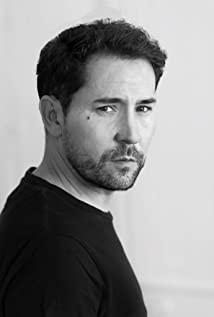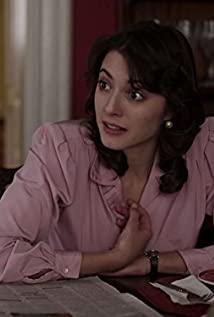"Mysterious Eyes"
If the "Olympic bid " that represents Israel is the 2009 Golden Lion Award winner "Lebanon" instead of "Ayami", which swept the Israeli Academy Awards, then this year's Oscar's top 5 best foreign language films There will be unprecedented battles between Golden Bear, Golden Lion, Palme d'Or and Cannes Jury Prize. In fact, although "Ayami" was not shortlisted for the main competition unit of the 2009 Cannes Film Festival, it still won the "Golden Camera Award-Special Mention Award" in Cannes that year. Therefore, among the five nominated films, only this one, "Mysterious Eyes", was not shortlisted in the three major film festivals, but it has swept the entire Spanish-speaking world last year and swept 9 nominations at the 2010 Goya Awards. Since its release in Argentina on August 13th, the audience has exceeded two million, with a high box office of 8.5 million U.S. dollars. It has also been popular in Spain and other Spanish-speaking countries.
Argentine films have been nominated for Best Foreign Language Film Oscar 6 times in history, among which the "Official Statement" in 1985 won the grand prize. The director of the film, Juan Jose Campanea, was nominated for an Oscar for Best Foreign Language Film in 2001 with "The Bride's Son" (El Hijo de la novia). He was born in Buenos Aires, the capital of Argentina, in 1959, majoring in engineering, but dropped out at the age of 21 and entered the Tisch School of Art at New York University to major in film. Since graduation in 1984, a total of 7 feature films have been shot. Campanea is mainly mixed in the North American TV drama industry. He has served as a diversity director in 14 series, including the famous "Doctor House" (3 episodes) and "Law and Order: Special Victims" ( Law & Order: Special Victims Unit, 16 episodes) etc.
Crime and Punishment is
based on the 2005 novel La pregunta de sus ojos (Question in Their Eyes) published by the Argentine writer Eduardo Sacheri (Eduardo Sacheri). Sacheli is a high school history teacher. He has published two novels and four collections of short stories so far. He and the director Campanea have served as screenwriters. The film revolves around a rape and murder case that took place on June 21, 1974. Federal Court clerk Benjamin Esposito took over the investigation of the case. Although the Federal Court closed the case in a hurry, he was in a relationship with the deceased’s husband and bank clerk. During Do Morales’ conversation, Esposito found clues from old photos and pinned the suspicion on Gomez, a classmate and hometown of the deceased. Esposito and his colleague El Salvador launched their own investigation, but Gomez has disappeared. El Salvador discovered that Gomez was a fan of the Argentine Athletic team, and finally caught Gomez in a game of the Athletic team. Although later Gomez pleaded guilty, Gomez was recruited as a thug by the extreme right wing of the Peron Party to fight against the left-wing guerrilla forces and was acquitted. After Gomez was released from prison, he retaliated. Esposito and his boss Elaine were intimidated. El Salvador was shot and forced to leave. After Esposito retired in 1999, he still couldn't let go of this old case. He set about writing a novel with this as the material, and tried to rehabilitate the old case with the beauty boss Elaine. He visited Morales before the novel was completed. Morales told him that he had killed Gomez and completed his revenge in 1975, but Esposito finally found out that Morales was kind. Just imprisoned Gomez. Esposito finally visited the cemetery of his friend El Salvador and untied the knot between him and Elaine.
The narrative of the film adopts a two-line structure. The process of the old Esposito's novel creation is intertwined with the investigation of the case 25 years ago as the content of the novel. This structure can also be called the "album structure". The "photo/past" as the subject of the narrative appears in the "album/present" as the narrative framework in a flashback manner; and after the flashback part ends, The story line finally merged into one. At the same time, the film’s narrative method is self-referential to a certain extent. Esposito’s “writing” behavior becomes the node and promotion element of the narrative, while the content of his “writing” becomes the main body of the narrative. Similar movies such as "Atonement" and so on. The interesting thing about this is that the "writing" behavior of the elderly Esposito dispelled the authenticity of the narrative to a certain extent, because he claimed that he was writing a "fiction"; but the purpose of his writing was He is trying to settle a matter that has lingered in his mind for many years, and his relationship with Elaine has been ambiguous. At the same time, he also tried to repair the relationship through writing and memory, which to some extent reflexively dispelled the fictionality of the novel. . When the story and life are deeply entangled in this way, it doesn't really matter whether it is true or not. What we know is that this man must face his heart bravely.
In the film, Gomez rapes and kills, but the law does not impose the death penalty on him. Life imprisonment is the highest punishment. In Argentina at that time, the country's judicial corruption, the federal court was not willing to seek justice, but only to close the case as soon as possible; even if the criminal was caught, he would be pardoned because he "has something to use for the country." In the film, the conscientious court staff Esposito and El Salvador can only "illegal investigation", while the victim's husband Morales can only seek "extra-legal enforcement." But what’s interesting is that even so, Morales still follows the principle of “no death penalty”. He moved to work in a deserted town and imprisoned the murderer Gomez in his home, spending his entire life on “enforcement”. ". Of course, because of his character, Ramores is a bank clerk. He is always meticulous in doing things. He can spend a year waiting at various railway stations to hunt down a wife and murderer. So his "principle" seems completely pedantic, because It was easy for him to retaliate for murder, and it was a matter of course, but he only executed the "judgment" that was not enforced by the law, and at the same time, was willing to exile himself. This is a very meaningful contradiction. If both the law and the state lose their justice and credibility, what should individuals do?
Revenge to history
From 1974 to 1975, Argentina was at the end of Peron’s re-rule. President Peron passed away on July 1, 1974. His wife, Vice President Martinez de Peron, succeeded as President. Although she continued to promote Peronism Political and economic policies, but there are still domestic political turmoil and deterioration of the economic situation. The terrorist activities of the left and right wing continue to escalate. In December 1975, the air force right-wing coup attempted. On March 24, 1976, the right-wing military coup succeeded, and General Videira assumed office. The President, thus began the years-long military dictatorship under the White Terror, that is, the infamous "Dirty War" in the history of Argentina. The number of missing persons reached 200,000 during this period. The Argentine film master Soo Lanas' "South", "Official Statement" which won the Oscar for Best Foreign Language Film, and the film of the same name based on the famous Argentine writer Puig's novel "The Kiss of Spider Woman" all reflect the social reality of this period. work.
In "Mysterious Eyes", Morales and Esposito learn about Gomez's release. The director uses "Forrest Gump" to embed Gomez in TV news screens. At this time, De Peron was being interviewed, and she said: "...and thank them too, we can't do this without their help, because people can't do these things alone. Their help puts everything on track... "At this moment, in the black-and-white picture on the TV, Gomez, standing behind the president, showed a smile on his mouth-this was obviously meant. It’s impossible to know what the president’s conversation is saying, but it seems to be thanking Gomez for what they have done. Of course, even if this scene is included in the film, it is also the content of Esposito's novel, and we can obviously regard it as a deliberate arrangement. Embedding the story into history is not just a time mark. Choosing this special historical moment expresses a certain judgment of the director and screenwriter on Argentine politics during Peron's reign.
In my opinion, if you do a little analysis that is suspected of over-interpretation, it means that Gomez, who represents the pain of history, was "acquitted" by the justice and the government, but was "brought to justice" on the people's side; However, he is still alive, just imprisoned, and deprived of the possibility of speaking (but he will still be discovered); and a person who is obsessed with "justice" or "truth" must face and discover this history Only afterwards can he really resolve the pain in his heart (Esposito was finally able to face the dead Salvador, and was finally able to break the barrier between him and Elaine); but at the same time, the pain of history still needs to be demanded and cannot be relieved. People who exile themselves and guard them; forgetting is not the way to redeem (Lamores said to Esposito 25 years later, "Forget it, forget all this."), because it is a painful pain; but in the end, all People have paid the price. Is the salvation complete? The end of the film only gives the beginning of a symbolic reconciliation-the truth of history emerges, and the long-delayed conversation between Elaine and Esposito finally begins. There are still many historical pains to be resolved in Argentina today.
Find the lost love
"Mysterious Eyes" is very familiar in audio-visual language, most scenes use handheld cameras, and the control of the focus point is extremely precise. Among them, a long shot of more than 5 minutes from 1:00:48 to 1:06:02 is a masterpiece (this is also very similar to "Atonement", remember the long shot of Dunkirk retreat?). Before the truth surfaced, the composition was mostly tilted and unstable. At the end of the film, the composition was finally corrected, the music became soothed, and the camera returned to the shelf—the dust settled. Many details in the film are also very particular. Elaine’s surname-Hastings-is obviously a tribute to Captain Hastings described by Agatha Christie; the reasoning element in this film is not deliberately strengthened, at best. It’s a social reasoning, because the director and screenwriter didn’t intend to do this. What they are trying to accomplish is a journey of healing exploration. An important prop in the film is a typewriter that lacks the letter "A". Esposito still used this typewriter when he wrote his novel 25 years later. He wrote all the letters A by hand. At the end of the film, Esposito wrote the letter A on the piece of paper-so Temo (I'm afraid), who was the motivation for Esposito's writing at the beginning of the film, became Te amo (I love you). This follows the truth. The water came to light and was completed. After a long time, the relationship between Esposito and Elaine finally moved forward here. At the end of the novel in the film, Esposito ran away with hatred in 1975. Elaine chased the train away and burst into tears. At the end of the film, Esposito, who wrote the novel, finally found the truth or novel. At the end, the love that should have belonged to him was also found.
This article was published in the February 2010 issue of Watching the Movie·Midnight Show
View more about The Secret in Their Eyes reviews











